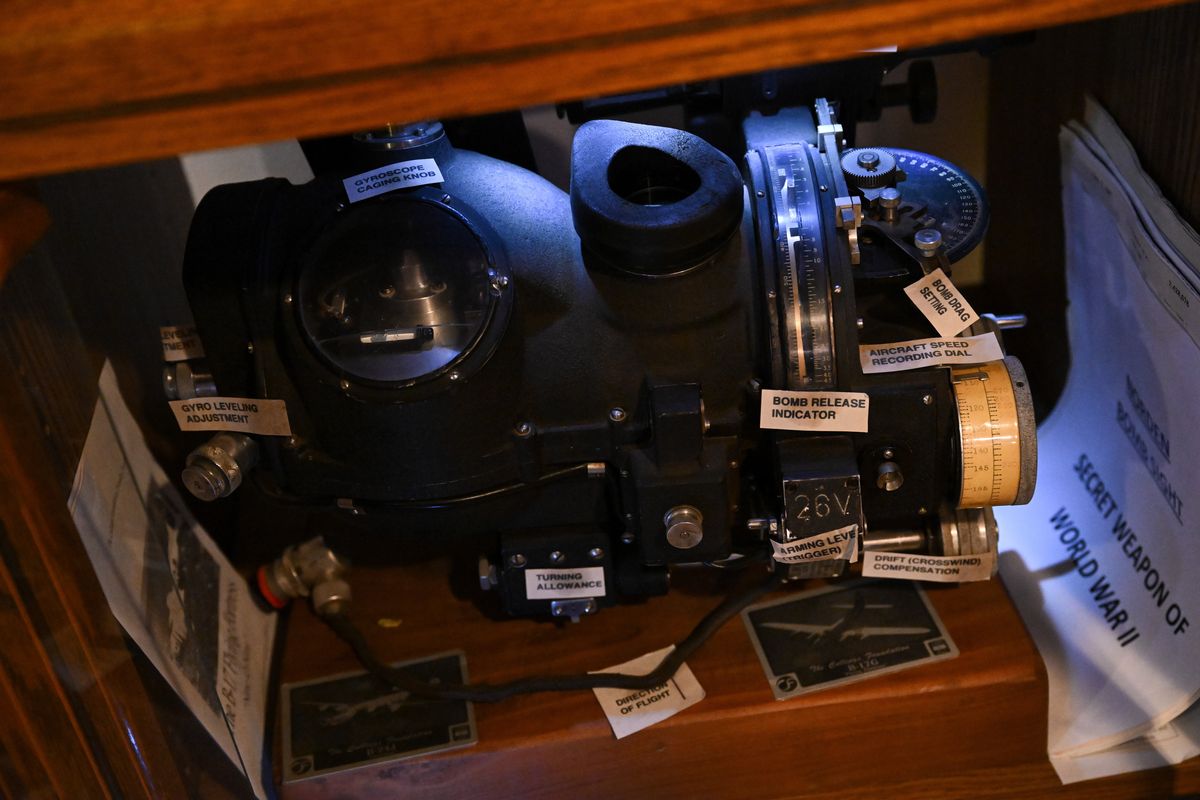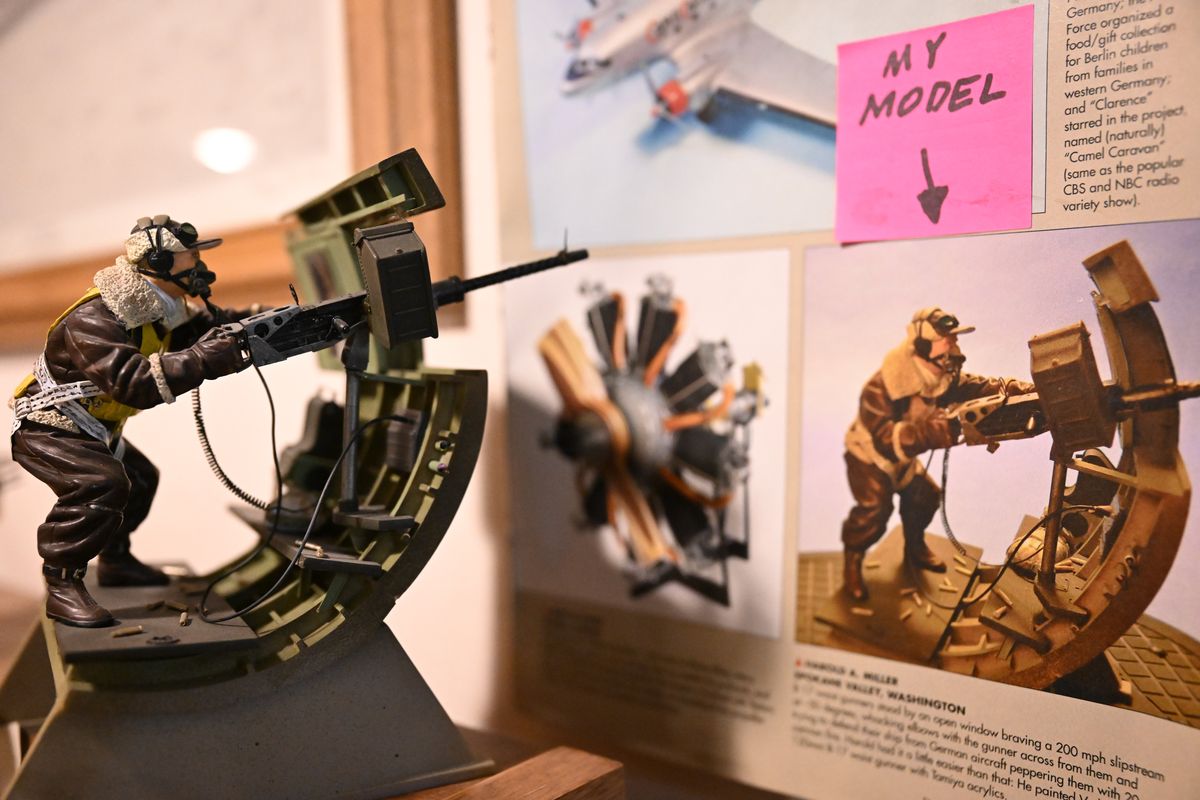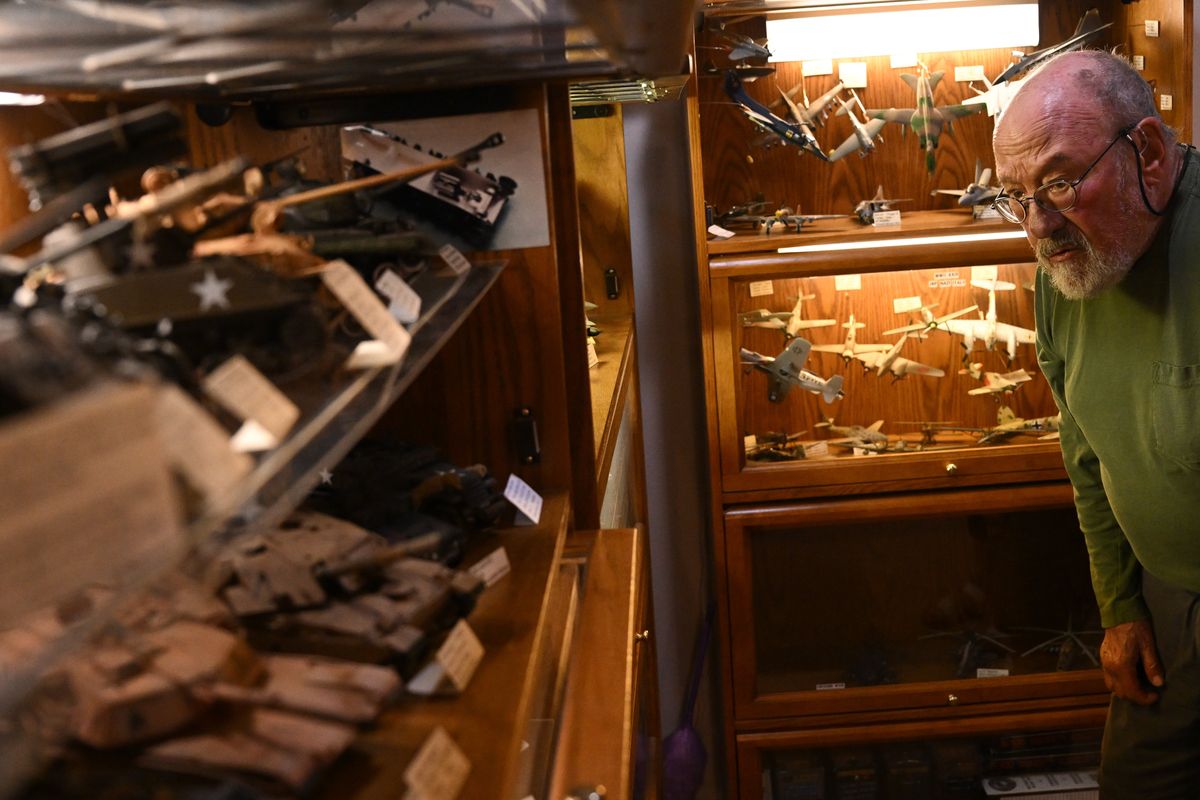The Collector: Harold Miller collects WWII models, dioramas, weapons and artifacts
Harold Miller’s elaborate cross-section model of a B-17 waist gunner was featured in a model building magazine. (Tyler Tjomsland/The Spokesman-Review)
Most boys who grew up in the 1950s built a model airplane or two, and Harold Miller is no exception.
“My first model was a balsa wood Piper Cub,” he said. “You actually had to carve it, sand it, and glue it together.”
Miller didn’t outgrow his love of building models, but his passion evolved into anything World War II-related.
“I have models of every ship, plane and armored vehicle used by both Allies and Axis powers,” he said.
But that’s not all.
He’s amassed dioramas, lithographs autographed by WWII heroes, artifacts and weapons.
“I have one of every personal weapon used by Britain, the U.S., Germany, Italy and Japan,” Miller said.
For this collector, a personal connection led to his desire to learn and commemorate everything he could about “the war to end all wars.”
Miller lost two uncles during the war. On a wall, he displays the Western Union telegraph his aunt received, a letter from the adjutant general informing her that her husband was killed in Germany on Feb. 8, 1945, and a letter of condolence signed by FDR.
Another uncle died two days after D-Day.
“As a child, I met both of them after they finished basic training,” he said.
His collection spans the pivotal moments of the war. Ship models include the USS Yorktown, which played a crucial role in the Battle of Midway, and the USS Missouri, the site of the Japanese surrender.
“I toured the Missouri when they brought it to San Diego,” Miller said. “Now it’s at Pearl Harbor.”
A diorama featuring a boat rescuing a member of the UDT (Underwater Demolition Team) took countless hours to complete. The Navy frogmen were a precursor to the present-day SEALS.
“I made the water and the waves with plaster of Paris,” he said. “But the aircraft carriers took the most time.”
Rows of model tanks in lighted glass display cases made by Miller showcase his detailed work.
“I use tweezers and magnifying goggles,” he said. “Doing the tracks on the tanks gets a little tedious. A lot of work goes into these, but the painting is where you can really mess it up.”
Every item features an information tag with a detailed description.
“I like to show the history – the action behind the model.”
He has plenty of research material at his fingertips.
“I have over a thousand books on WWII and I’ve probably read about 50% of them,” Miller said.
His diorama of a British Desert Rat vehicle is so realistic it appears to catch air as the driver steers with one hand, while the gunner balances behind him.
Rows of aircraft fill another display.
A British Horsa glider soars near a model of a 1942 twin-engine Mosquito.
Miller pointed at the Mosquito.
“They made it out of wood, so it couldn’t be picked up by radar.”
In addition to the model planes, he has lithographs signed by several famous pilots.
Gen. Clarence “Bud” Anderson signed one featuring his Mustang “Old Crow.”
“Bud Anderson was a triple ace,” Miller said. “I met him and Chuck Yeager at a book signing. Anderson was the better pilot.”
He also has a lithograph signed by Hubert Zemke, the fighter ace who commanded the feared “Wolfpack.”
“I met him at an air show and he challenged me to a boxing match!” Miller said. “He must have been in his 70s and I was in my 30s.”
One of his most cherished lithographs bears the signature of Jimmy Doolittle, an aviation pioneer and famed World War II air commander.
“I got it two weeks before he died,” he said.
A long career in the defense industry as a draftsman and engineer adds to his knowledge and appreciation of his collection.
An unusual item, a Norden bombsight, was said to be one of our most secret weapons during the war.
“It was as top secret as the bomb,” Miller said. “Most of them were destroyed.”
The Norden sits a cabinet with a P-38 fighter gunsight and a gunsight from a Sherman tank. Nearby, a cluster of hand grenades used by the U.S., Japan and Germany shows each country’s unique take on the weapon.
His collection of personal weapons used during WWII includes an M-1 rifle, of which Patton wrote, “In my opinion, the M-1 Rifle is the greatest battle implement ever devised.”
Two Arisaka rifles used by Japan look identical but have a crucial difference.
“The rifles were stamped with a chrysanthemum, the emblem of the empire,” he said. “When the Japanese surrendered, they sanded the chrysanthemum off.”
One of Miller’s Arisakas has the emblem and one does not, indicating it was taken from the soldier before he had time to remove the marking.
Though he considers the firearms an important part of history and of his collection, his models and dioramas offer more enjoyment.
“The best part is putting them together,” Miller said. “When you’re done with one, it’s kind of melancholy.”
Thankfully, he has plenty more to assemble.
“I’m looking forward to building a Flying Tiger!” he said.
His WWII collection isn’t his only fascination. He also has models and dioramas from the Korean, Vietnam and Civil wars.
“I have so many interests, you might call me a renaissance man,” Miller said.





